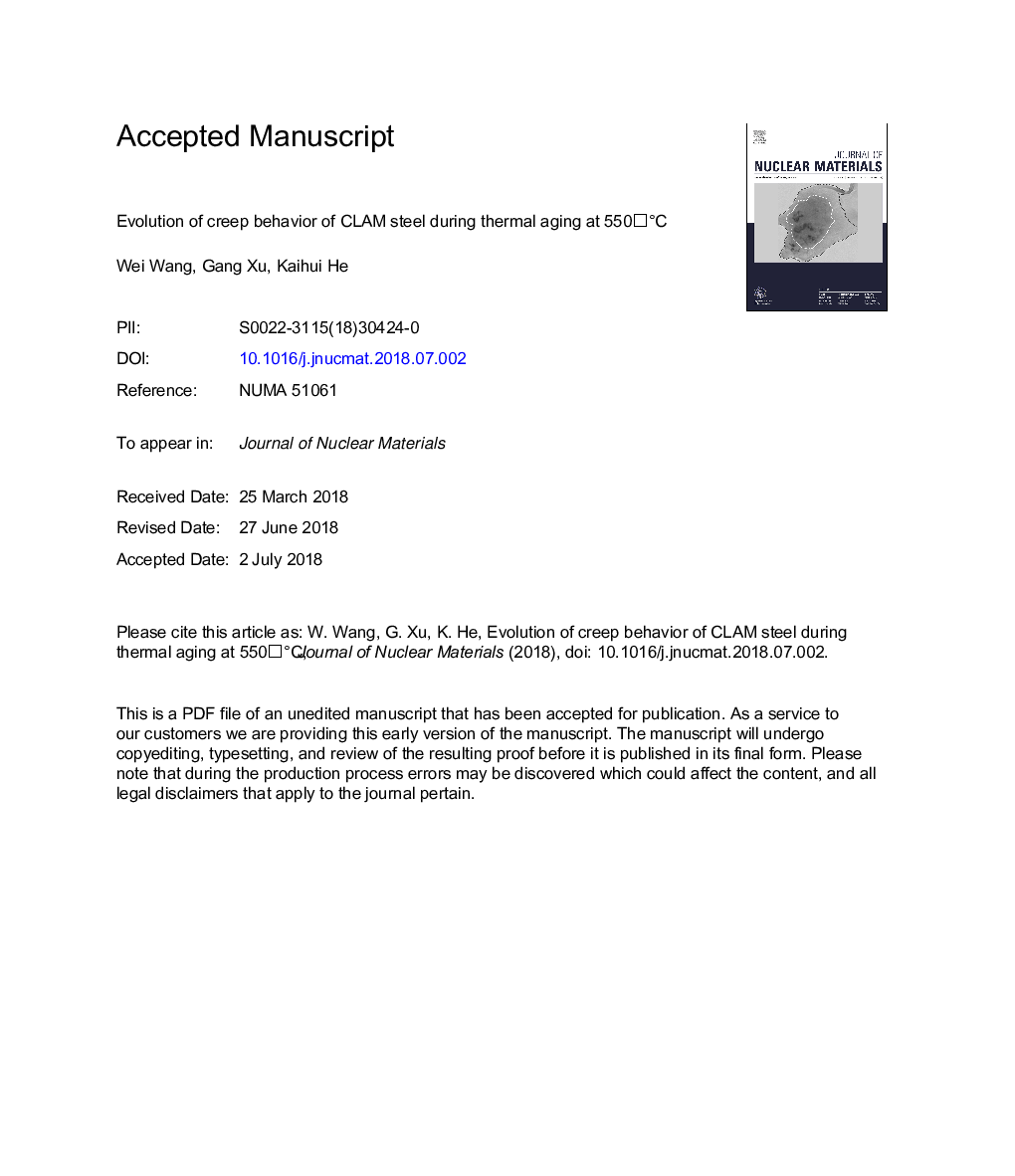| Article ID | Journal | Published Year | Pages | File Type |
|---|---|---|---|---|
| 7962902 | Journal of Nuclear Materials | 2018 | 13 Pages |
Abstract
As the primary candidate structural materials for fusion energy systems, reduced activation ferritic/martensitic (RAFM) steel must to withstand high temperature for a long periods of time. The microstructure of RAFM steel would change due to thermal aging in service, and that would resulting in the change of creep behavior. The aim of this paper is to investigate change of creep behavior of CLAM steel after thermal aging at 550â¯Â°C for 2000â¯h and 4000â¯h. The results showed that the creep property degenerated obviously after thermal aging. After aging for 4000â¯h, the creep-rupture time of CLAM sample decreased from 202â¯h to 111â¯h and the minimum creep rate increased from 3.61â¯Ãâ¯10â4 sâ1 to 6.84â¯Ãâ¯10â4 sâ1, compared to un-aged sample. The reason for creep property degeneration was inferred to be that the solute atom in CLAM matrix decreased during the process of second phase precipitated and coarsened after thermal aging. The analysis indicated that the maximum operating temperature and rupture life of CLAM sample was decreased by the effect of thermal aging.
Keywords
Related Topics
Physical Sciences and Engineering
Energy
Nuclear Energy and Engineering
Authors
Wei Wang, Gang Xu, Kaihui He,
